SPACE May 2023 (No. 666)
Phenomenon 1. Becoming the Purpose of the Visit
Phenomenon 2. Connecting Residents and Communities
Phenomenon 3. Weaving an Experience
In an era in which we find the word ‘experience’ attached to everything from our economy, consumption, design, and marketing, the cafés of today are asked to provide something more innovative, more unique, more detailed, and more beautiful than the usual experience of drinking coffee. This is particularly true if we are referring to a city context in which we see myriad cafés daily crowded with people, many of whom can only afford the limited time in their busy schedules to nip to a café instead of escaping the city altogether. In light of this, what is the role of the architect? As a collaborator with Blue Bottle Coffee which is currently expanding its services with branches in various international cities, Nagasaka Jo (principal, Schemata Architects) is responsible for devising the spatial experience of the brand. Likewise, THE FIRST PENGUIN, Fabrikr, COM, and nendo are design studios that are sculpting unique café experiences within the city not only via architectural features but also through various tools such as planning, branding, furniture, and art. In Phenomenon 3, reaching beyond the architect’s framework, we will listen to the stories behind these cafés and come to understand their own special means of survival in the city.
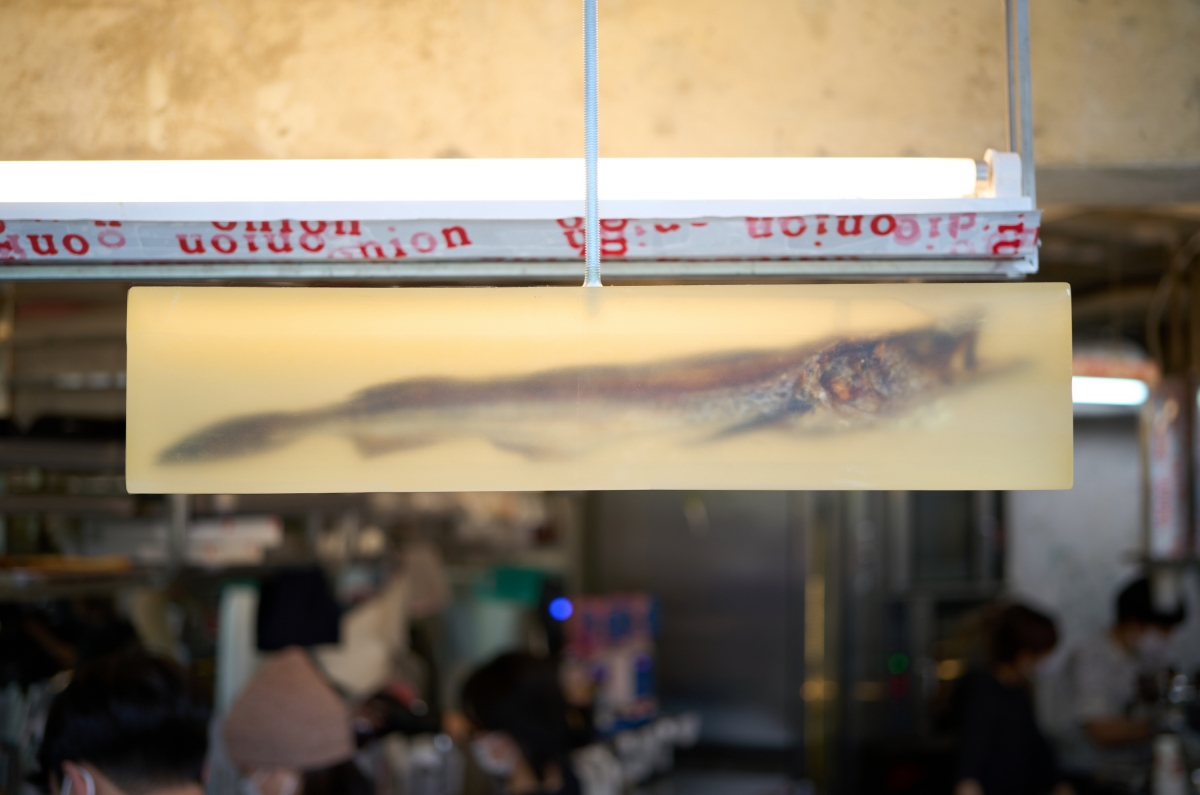
Cafe Onion Gwangjang Market
The Region, Redrawing the Map: Fabrikr
Interview Kim Dongkyu, Kim Sungjo co-principals, Fabrikr × Youn Yaelim
Youn Yaelim (Youn): While Cafe Onion Seongsu (2016), Mia (2018), and Anguk (2019) were renovation projects of an unused factory, post office, and hanok, respectively, Cafe Onion Gwangjang Market (2022) is situated inside a traditional market. How did you adapt your approach towards these different locational conditions?
Kim Dongkyu, Kim Sungjo (Fabrikr): Cafe Onion is a brand that adapts to the region in terms of its spaces and content. We are always on the hunt for a space that would be conducive to the values of Cafe Onion—that is, of sharing culture, art, and inspiration. In the case of Mia for example, we thought that the context and characteristics of the post office that collects and distributes information is well suited to Cafe Onion’s philosophy. With collaborations between brands such as the Farmers’ market Marche, we are currently working on various projects that showcase regional features. Moreover, what we tend to focus on in terms of spatial design is to display a location’s history. For Seongsu, we placed emphasis on recovering any spatial traces that were left behind as the place transformed from a supermarket, restaurant, residential house, garage, and factory over the past 50 years. For Anguk, we focused on restoring the original hanok from what was then an unruly composition of various layers that had sedimented over the 100 years of their multiple use and transformation. Also, we thought that this hanok would be suited to representing Seoul’s coffee culture. By lowering the floor partially to translate how one would experience the relative height of windows and ceiling from a floor-seating position to a standing position, we sought to preserve the relationship that was originally intended in the 100-year-old hanok design. As for Gwangjang Market, we wanted to remove its barriers with the neighbouring stores. We demolished the outer wall to remove the interior-exterior boundary while reinterpreting the unique characteristics and patterns of the market as designs for the store sign, furniture, and menus.
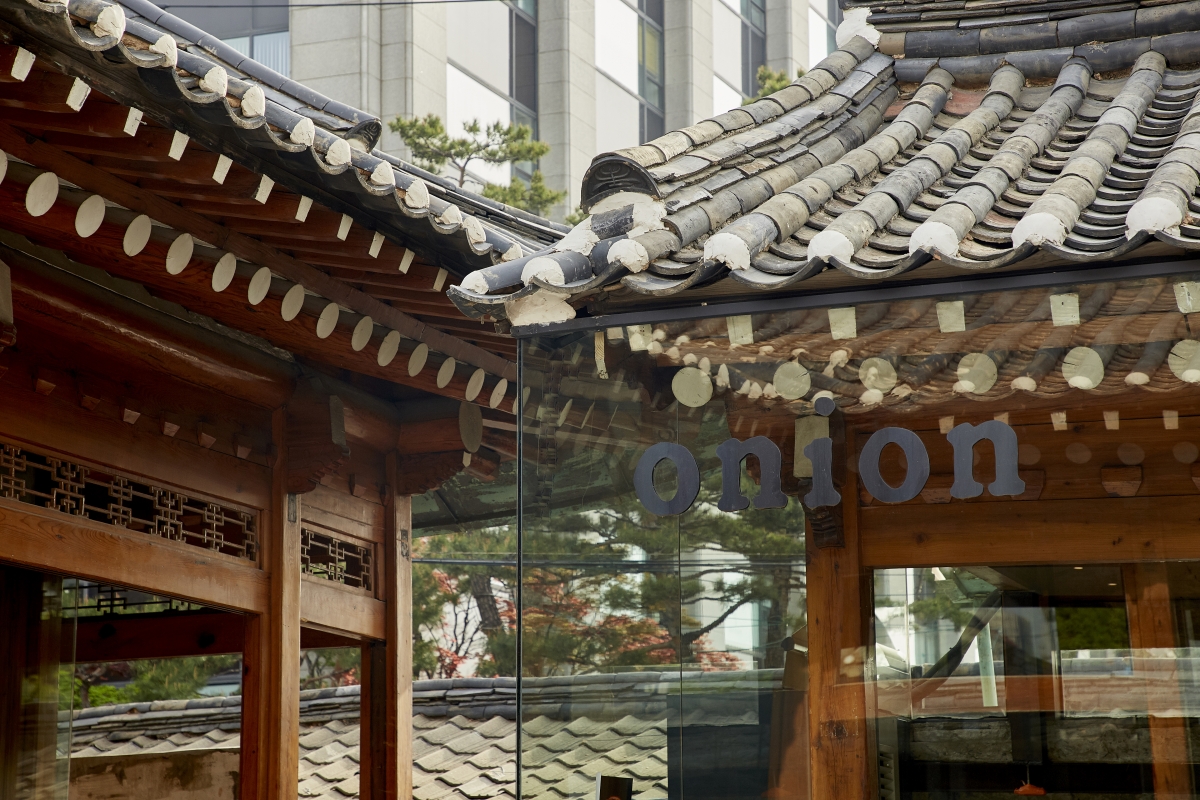
Cafe Onion Anguk
Youn: Photos of Cafe Onion Gwangjang Market’s faulty-looking and flickering store sign lights, the hanging dried pollack by the entrance, and the plastic chair wrapped with tape were shared across Instagram and attracted many visitors. I assume that scene-creating is quite different from space-creating. How do you approach each of these practices?
Fabrikr: Perhaps you will find it hard to believe, but we do not differentiate between the two. We put all our focus on translating the design and its intended message into reality. Gwangjang Market was filled with a kind of raw energy, regional expressions, antiquity, and other folksy aesthetics. We thought that if we were to keep the original sentiments of these old stores while introducing a new content with a crowd-drawing element, then a range of experiences combining the old and new would provide reasons for people to visit the market. By creating new traffic at each of its entrances and exits located at all cardinal points, a flow that circulates throughout the entire market could be created. This was why we situated the café near south gate 1, an area which was relatively less populated. By placing the main point of contact at the endpoint of the market, it would help to distribute and elongate circulation into a steady flow.
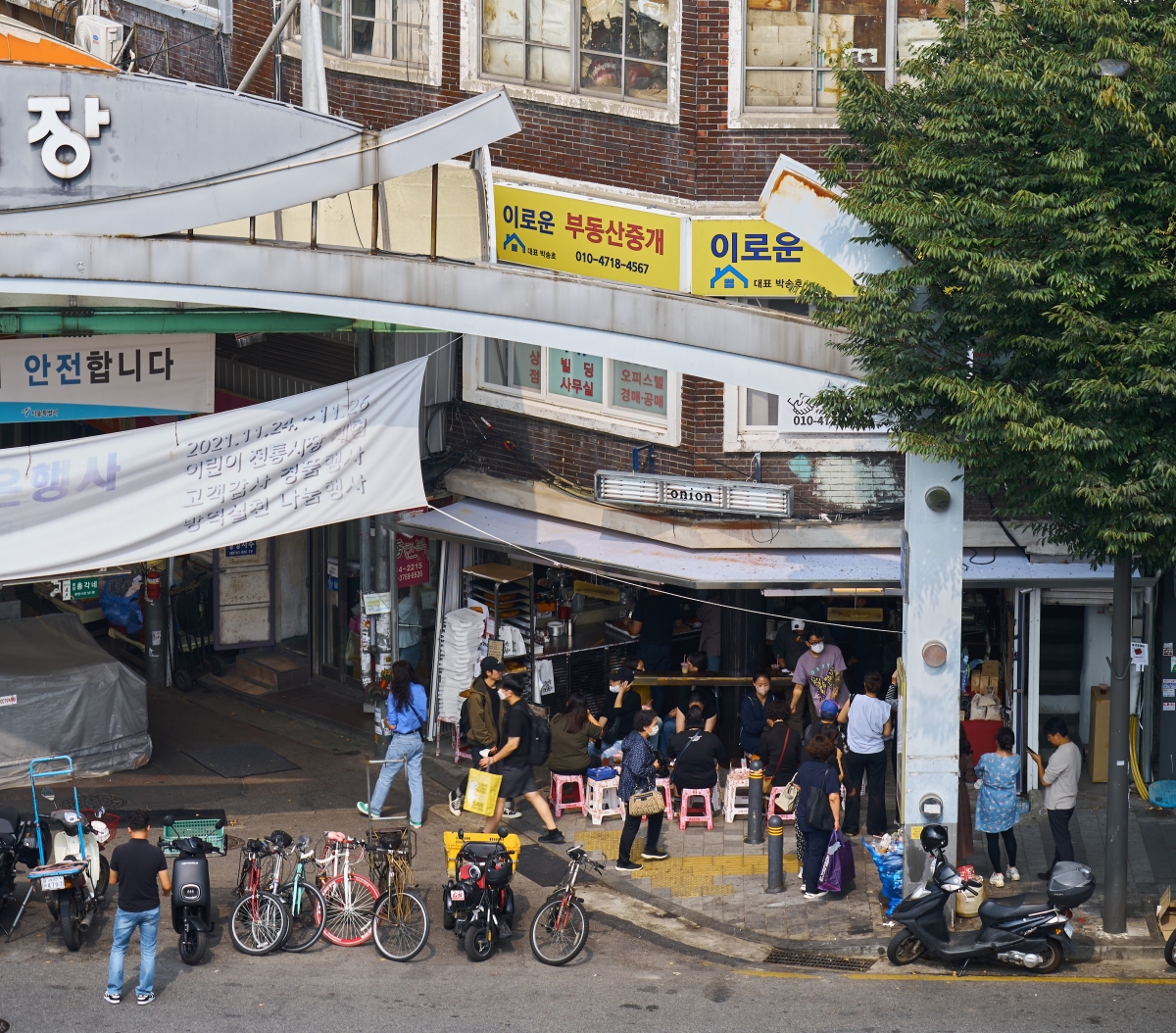
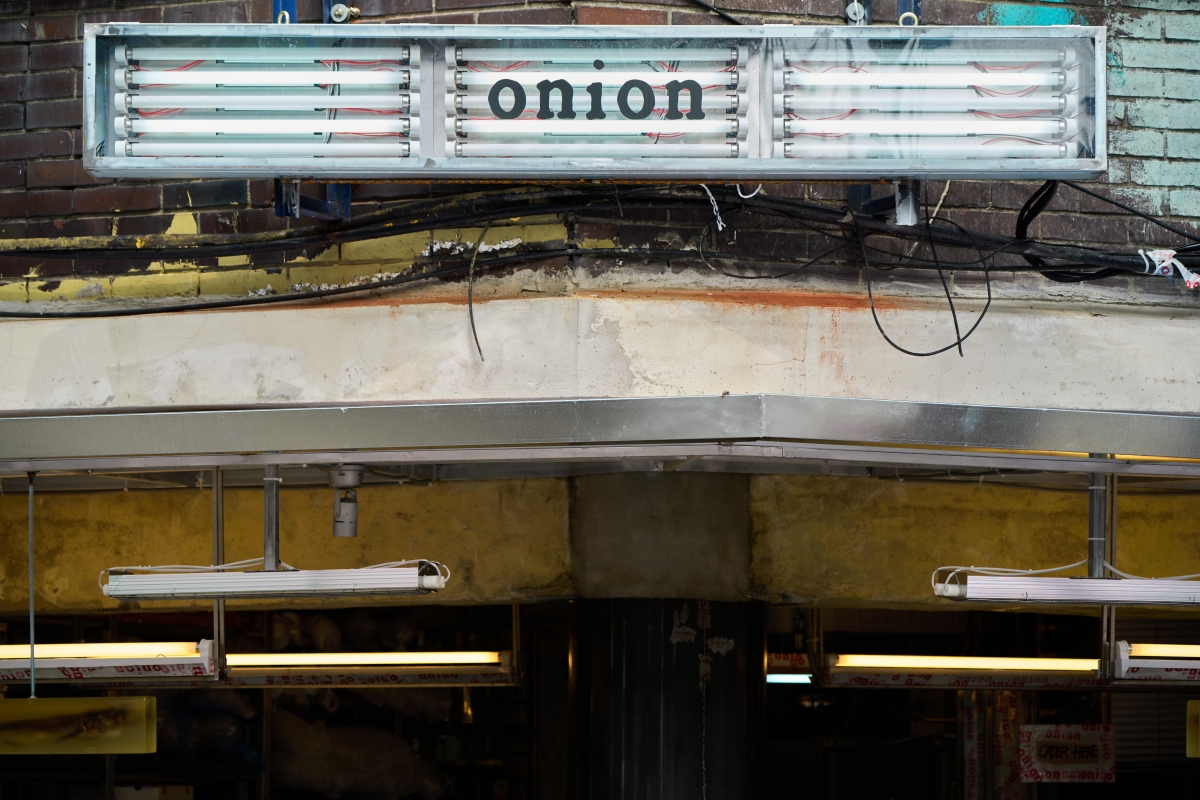
Cafe Onion Gwangjang Market
Youn: Isn’t drawing on regional contexts the consumption of regional characteristics? How can commercial spaces and and the region in which they’re located be of benefit to one another, and what, ultimately, is the life expectancy of a café?
Fabrikr: A region is sustained by the economic activities of a commercial space, while a commercial space is sustained by the region’s unique and compelling qualities. In such a relationship, I think that the key is to maintain a good balance between preservation and development. If a commercial space is developed to reflect the unique atmosphere of the region and thereby to possess a certain quality that no other places have, then this will contribute toward a region’s sustainability. It has been eight years since Cafe Onion Seongsu opened doors in 2016. Seongsu-dong has changed much over these eight years, but it is still beloved by people. This store also possesses the most ideal ratio between local and external customers. While remaining steadfast in terms of the brand and its values, it is important that we also adapt to the changing demands of the region and the era as time passes.
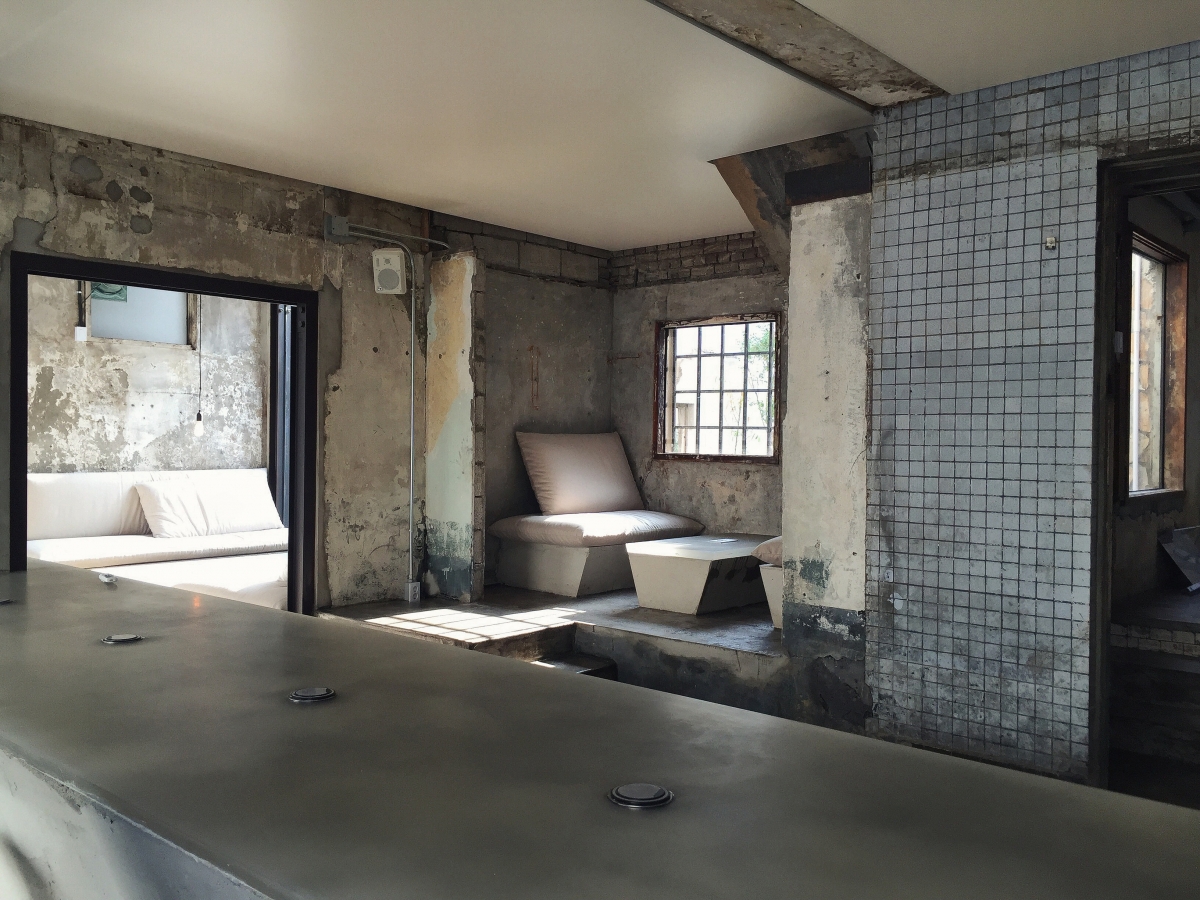
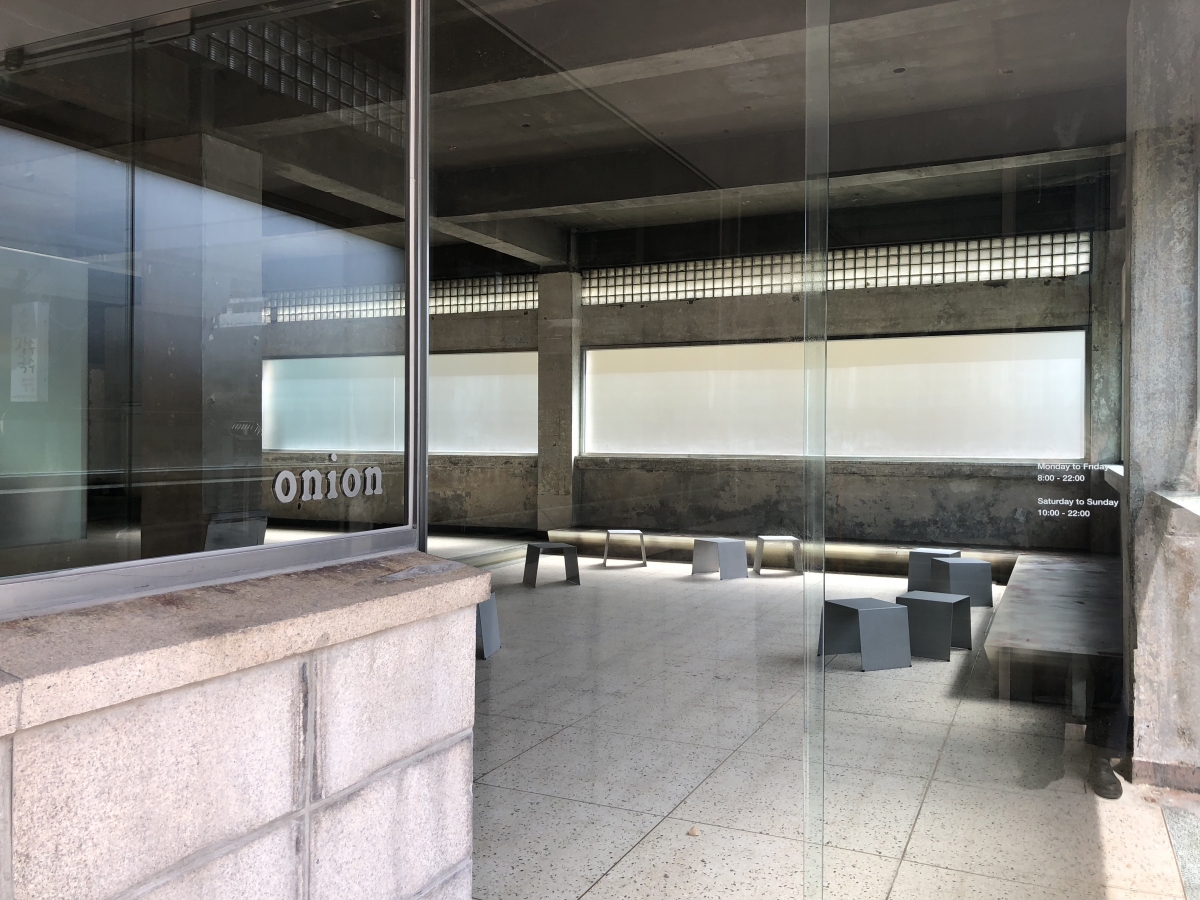
(top) Cafe Onion Seongsu (bottom) Cafe Onion Mia
You can see more information on the SPACE No. 666 (May 2023).






